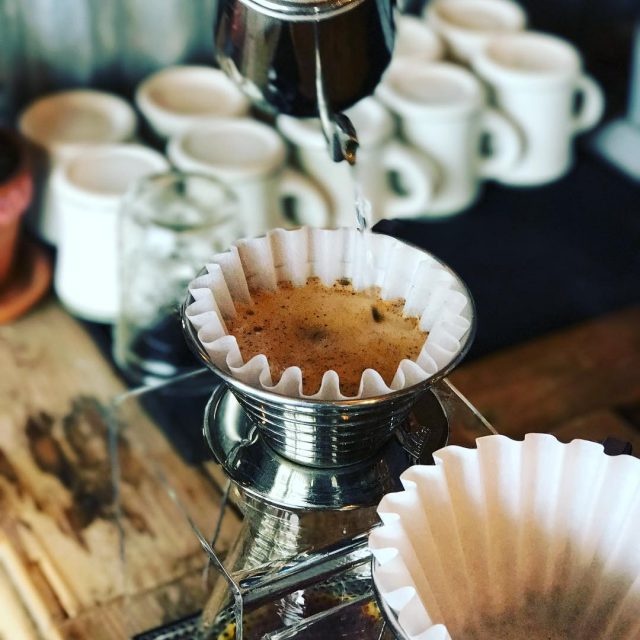Introduction to Ethiopian Flavor planting Industry of Fine Coffee, the birthplace of Coffee
Professional barista exchanges please pay attention to coffee workshop (Weixin Official Accounts cafe_style) Ethiopia (Ethiopia) coffee birthplace-Ethiopian coffee tree originated in Ethiopia (Ethiopia), it was originally a wild plant here,"coffee" this name comes from Ethiopia's small town-"Kaffa"(Kaffa). In fact, many coffee trees in Ethiopia are still wild plants, and the coffee grown on this coffee tree is full of particles and slightly fragrant. Humans may have known how to cultivate coffee trees as early as the ninth century, but who, how, and why remains a mystery. Local Ethiopian legend says coffee began as something monks used to keep their heads clear for evening prayers. Today, Ethiopia is an important coffee producer with approximately 12 million people engaged in coffee production and is Africa's leading exporter of arabica coffee beans. The quality of coffee here is excellent and worth looking for. Ethiopia has a variety of coffee cultivation methods: from wild coffee groves and semi-developed plots, to small plots of traditional farming, to modern plantations. About 50 percent of coffee is grown at altitudes of more than 1500 meters. Harrar coffee is the highest coffee grown in Ethiopia. Hara coffee can be divided into long coffee beans and short coffee beans, of which long coffee beans are the most popular. It has a soft taste, with a wild aroma, and slightly sour, after drinking unforgettable. Djimmah coffee grows wild at more than 1200 metres above sea level and is sold under two brands, Limu and Babeka. Other coffee names include Sidamo coffee from Central, sold under the brand name Yirgachaffe, and coffee with distinctive flavors from Lekempti, where the beans are not pleasant in appearance but taste good. The rarest Ethiopian coffee beans on the market are Irga Chafee beans, which are exported to Japan and Europe but rarely seen in the United States. This is because Dallmeyer, a German coffee roaster owned by Nestlé, has established close ties with the growers of Ilgachafi coffee, thus obtaining the largest single supply of the beans. Ethiopian coffee flavor is difficult to describe, it is neither strong, sour nor very obvious. Therefore, it is not suitable for deep baking, otherwise it will easily lose its characteristics. When it comes to specialty, Ethiopian coffee is somewhat similar to the famous mocha coffee. Of course, quality Ethiopian coffee can be compared to the best coffee from around the world, including its considerable price. Ethiopia has the highest domestic consumption of coffee in Africa. In the countryside, it is often served with a herb called Health of Adam: fresh coffee beans are roasted and mashed with vanilla, then the mixture is brewed and drunk in small cups, often served with pancakes to bring out the sweet pepper flavor in the pancakes. The coffee industry is managed by the Ethiopian Coffee Marketing Corporation (ECMC), which controls 90 percent of the export market. There is a risk that control of Ethiopian coffee companies will soon be relaxed and greater local power will be gained, a move that will benefit the coffee industry as a whole, especially individual traders. Ethiopian coffee is sold at daily auctions and is mostly exported to Germany, the United States, France and Japan.

Important Notice :
前街咖啡 FrontStreet Coffee has moved to new addredd:
FrontStreet Coffee Address: 315,Donghua East Road,GuangZhou
Tel:020 38364473
- Prev

Cameroon boutique coffee beans coffee history cold knowledge
Communication of professional baristas follow Coffee Workshop (Wechat official account cafe_style) Deep roasted coffee beans suitable for distilling espresso in Cameroon the cultivation of the Arabica coffee tree in Cameroon began in 1913 with the Blue Mountain Coffee from Jamaica, but robusta coffee is also heavily produced in that country. The quality and characteristics of Cameroon Coffee and Coffee from South America
- Next

Cote d'Ivoire coffee beans African coffee producers
Professional barista exchanges, please pay attention to coffee workshop (Weixin Official Accounts cafe_style) Cote d'Ivoire is one of the largest producers in the world in terms of quantity. Cote d'Ivoire has never produced the best quality coffee, and it rarely comes from Arabica trees. In the early 1980s it was the third largest coffee producer in the world,
Related
- Beginners will see the "Coffee pull flower" guide!
- What is the difference between ice blog purified milk and ordinary milk coffee?
- Why is the Philippines the largest producer of crops in Liberia?
- For coffee extraction, should the fine powder be retained?
- How does extracted espresso fill pressed powder? How much strength does it take to press the powder?
- How to make jasmine cold extract coffee? Is the jasmine + latte good?
- Will this little toy really make the coffee taste better? How does Lily Drip affect coffee extraction?
- Will the action of slapping the filter cup also affect coffee extraction?
- What's the difference between powder-to-water ratio and powder-to-liquid ratio?
- What is the Ethiopian local species? What does it have to do with Heirloom native species?

